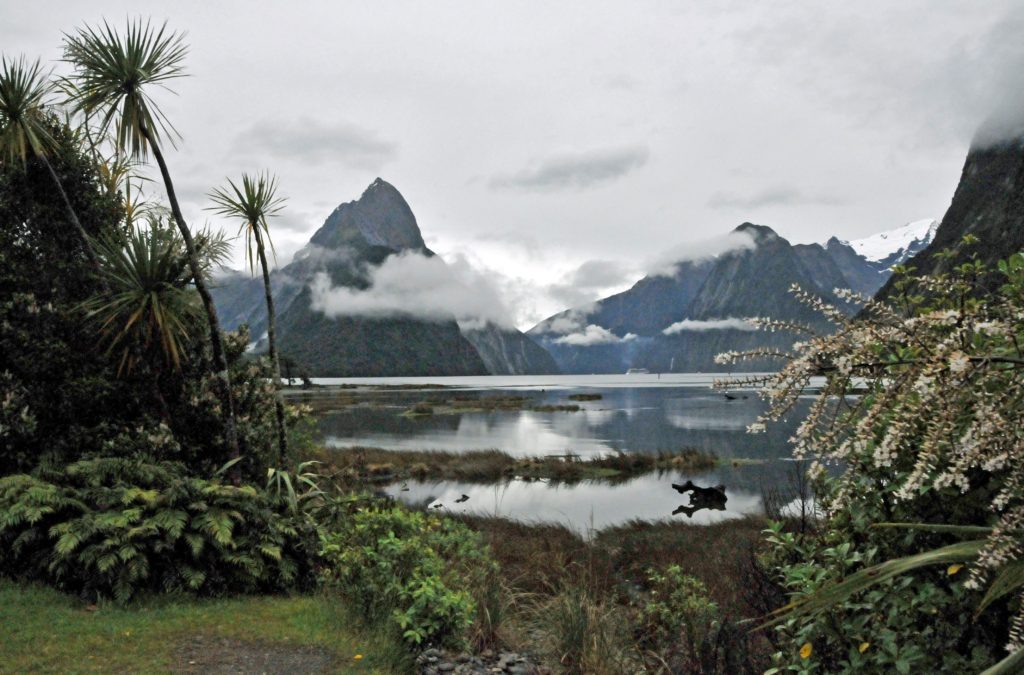
Milford Sound has been described as the most beautiful place on earth. Rudyard Kipling called it the eighth wonder of the world. Geologists say it was misnamed.
Milford Sound is a narrow, ten-mile-long body of water lying between 4000-foot-high cliffs on the southwest coast of New Zealand’s South Island. It is linked to the Tasman Sea by an inlet so constricted that Captain James Cook passed it by when he meticulously mapped the New Zealand coastline in the 1770s. When Welsh sealers later entered the inlet, they named the area Milford Sound after a town in Wales. Geologists point out that “sound” describes a flooded river valley and Milford Sound is instead a fiord (or fjord), carved into the mountains by ancient glaciers. Milford Sound is the northernmost and best known fiord in Fiordland National Park, itself a part of Te Wahipounamu, a UNESCO World Heritage site.
For generations, the spectacularly beautiful Milford Sound area could be reached only by sailors and people making the several-day trek along the Milford Track through the rugged mountains surrounding it. In 1935, workers employed by the New Zealand government began building, initially by hand, the Homer Tunnel connecting two valleys. When the tunnel opened in 1953, people could travel by motor vehicle on the 75-mile-long Milford Road from Te Anau, the nearest town, to the rain forest at the head of the fiord. From there visitors can view magnificent waterfalls and Mitre Peak, rising almost vertically for more than a mile and named for the bishop’s hat it resembles. In 1998, Milford Sound was officially given the additional name Piopiotahi in recognition of what the Māori people who settled New Zealand in the 1300s called the area. Milford Sound/Piopiotahi is New Zealand’s most famous destination, attracting up to a million visitors each year.
Comments are closed.